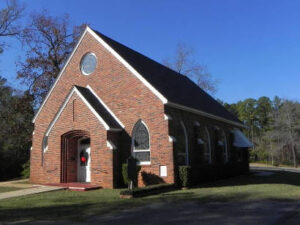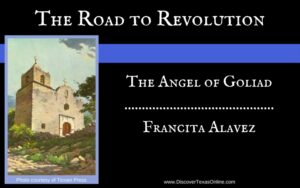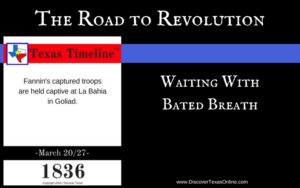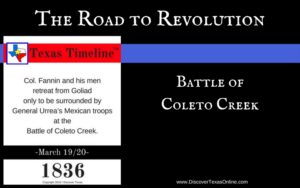What began as a Happy Birthday shout-out to the Independence Baptist Church has happily expanded into a short series including another long-serving congregation in Little River, a biography of Z. N. Morrell, and a post about circuit riding preachers, but we really can’t talk about circuit riders without mentioning the Methodist denomination, who were the first to develop the concept and also the first to bring this outreach to the Texas frontier.
The first Protestant minister to preach in Texas was an ordained Methodist, William Stevenson, who preached at Pecan Point (now Red River County) during an exploratory journey he made from Tennessee in the autumn of 1815–TWO HUNDRED years ago! When Claiborne Wright moved his pioneer family to Pecan Point the following year, Stevenson was appointed to serve a circuit that included churches in Arkansas and north-east Texas.
The oldest continuing Protestant church in Texas was also Methodist–McMahan’s Chapel, founded by James Porter Stevenson (William’s son, and himself a licensed Methodist minister) near San Augustine in 1833. The following year, Methodist pastor Henry Stephenson was assigned to the Texas Mission, which included a circuit around San Augustine.
Note that these Protestant ministries were begun in the days when Texas was under Mexican rule. The official policy of the Mexican government permitted only the Catholic religion in the colony. Henry Stephenson had first brought his family to Texas with Stephen F. Austin’s colonists in 1824, but turned back because Austin would not support Protestant worship for fear of upsetting relations between the Anglo settlers and the Mexican government. These missionary efforts were bold, indeed, often organizing as “religious societies” to avoid the official ban on Protestant churches. When Texas became an independent republic in 1836, it took less than a year for the Missionary Society of the Methodist Episcopal Church to establish a mission to the state. The Methodist system of sending out circuit riders under the supervision of presiding elders and bishops, brought to the United States from England in the 18th century, proved remarkably effective in the new republic. The Anglo population of Texas at this time was only 20,000-30,000 and widely scattered, yet within five months the newly-appointed Texas superintendent and his two assistants reported twelve circuit-riding preachers serving twenty societies with 325 members. Five church buildings were already under construction. Just three years later in 1840, membership had increased 600% but was still being served by only seventeen preachers who rode fourteen circuits. By the time Texas joined the Union, church membership had increased to almost 7000 with 59 Methodist circuit riders and 68 local pastors.
Church life and a minister’s job in frontier Texas bore little resemblance to our modern experience. Life was difficult, families isolated. The circuit-riding ministers faced hostile Indians, Mexican uprisings, epidemics of malaria, typhoid, and yellow fever as well as hindrances to travel such as storms, flooding rivers, and muddy roads. A quarterly worship service or a summer “camp meeting” or revival were social and spiritual highlights of community life. In between, congregations attended to their own spiritual growth by meeting weekly for Sunday school.
It is also worth noting that even in these early days these frontier churches reached out to members of all ethnicities–Anglos, Germans, Hispanics, and blacks, both slave and free.




